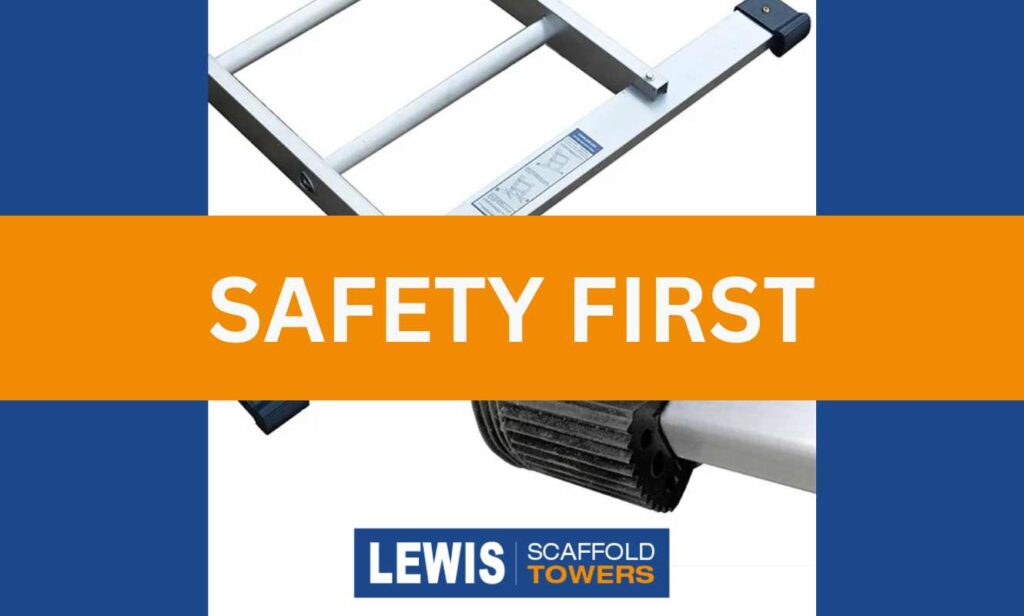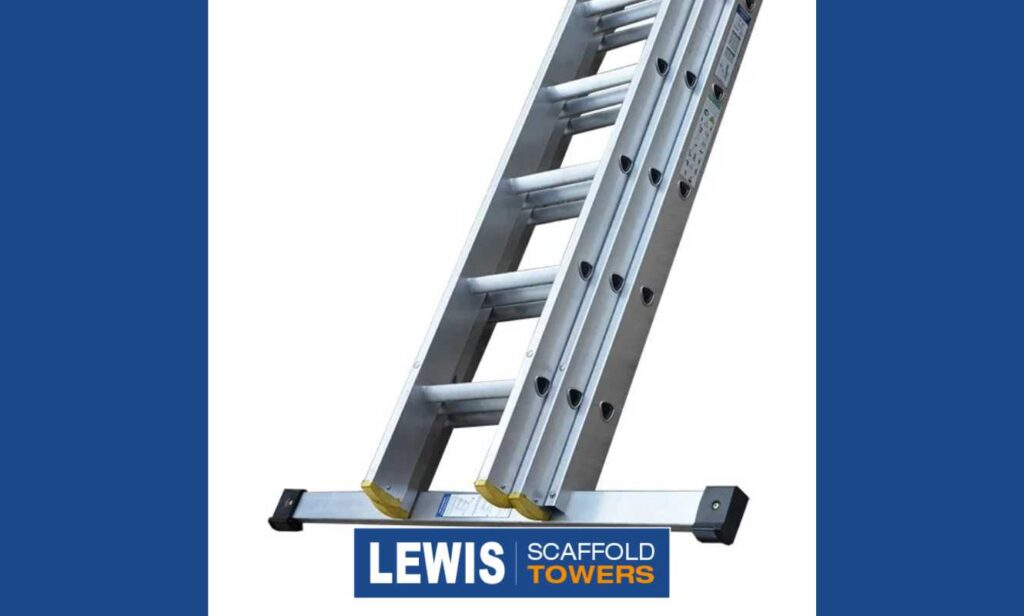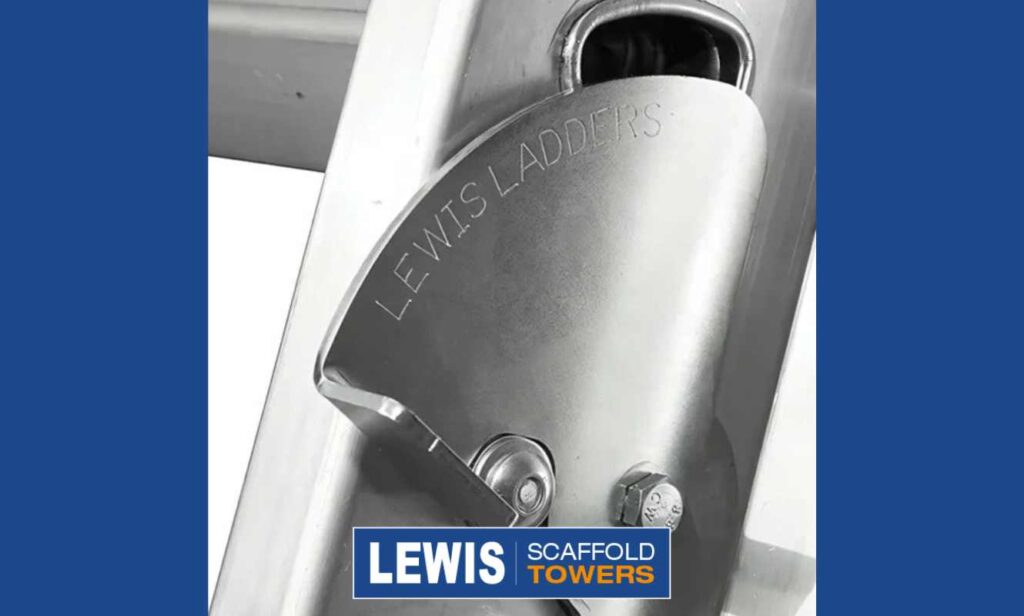Choosing the right ladder size is crucial for both safety and efficiency when working at heights. Knowing what size ladder you need is central to carrying out safe and efficient work. Using a ladder that is too small can lead to instability, while one that is too large may be cumbersome and difficult to manage.
To determine the correct ladder size, several factors must be considered, including the height of the task and the space available for the ladder.
Understanding these factors is key to selecting a ladder that meets your needs and ensures a safe working environment.
Key Takeaways
- Assess the height of the task to determine the required ladder height.
- Consider the space available for the ladder to ensure safe placement.
- Choose a ladder that is sturdy and suitable for the task.
- Always follow the manufacturer’s instructions for ladder use.
- Regularly inspect your ladder for damage or wear.
Understanding Ladder Measurements
To ensure what size ladder works best for your needs, it’s essential to grasp the basics of ladder measurements. Understanding these measurements is crucial for both safety and efficiency when working at heights.
Standard Ladder Size Terminology
Ladder sizes can be described in various ways, but standard terminology includes the ladder’s overall height, working height, and extended height. Familiarising yourself with these terms is vital when selecting a ladder.
The Difference Between Extended and Working Height
The extended height refers to the maximum height a ladder can reach when fully extended, whereas the working height is the maximum height a person can safely reach while standing on the ladder. Typically, the working height is around 1-2 meters above the ladder’s height, considering the user’s height and stance.
Maximum Reach Height Explained
The maximum reach height is influenced by the type of ladder and the user’s ability to safely stand on it. For instance, a step ladder generally provides a higher reach than an extension ladder of the same height because you can stand on the top steps of a step ladder, whereas on an extension ladder, you’re advised to stand a few rungs down for safety.
The Importance of Choosing the Correct Ladder Size
The importance of selecting the correct ladder size cannot be overstated, as it directly impacts safety and efficiency. Thousands of people are injured annually in ladder-related accidents, often due to using a ladder that is too small or too large for the task.
What Size Ladder Safety Considerations
Using a ladder of the correct size is crucial for safety. A ladder that is too short may cause you to overreach, increasing the risk of falling, while a ladder that is too tall may become unstable. Ensuring the ladder is the right size helps maintain three points of contact, whether two hands and one foot or two feet and one hand.

Efficiency and Comfort
The right ladder size not only enhances safety but also improves efficiency and comfort. When the ladder is at the correct height, you can work without straining or overreaching, making tasks easier and faster to complete.
Preventing Accidents and Injuries
Key factors in preventing accidents include:
- Ensuring the ladder is on a firm, level surface
- Maintaining the correct angle for the ladder
- Having the appropriate ladder size for the task
By focusing on these aspects, you can significantly reduce the risk of accidents and injuries.
Basic Formula for Calculating What Size Ladder You Need
Choosing the correct ladder size involves a simple yet effective formula that takes into account several critical factors, including the height you need to reach and the distance of the ladder from the wall. Ensuring you have the right ladder size is vital for both safety and efficiency.
The 4:1 Ratio Rule
The 4:1 ratio rule is a fundamental guideline for setting up extension ladders safely. For every four feet of height, the ladder should be one foot away from the wall. This rule helps in calculating the correct ladder height and ensures stability.
For example, if you need to reach a height of 12 feet, your ladder should be positioned 3 feet away from the wall. This simple calculation significantly reduces the risk of accidents.
Working Height vs. Ladder Height
It’s essential to differentiate between working height and ladder height. Working height refers to the maximum height you need to reach, while ladder height is the actual height of the ladder. To determine the required ladder height, you need to consider both your working height and your own height.

Adding Your Height to the Equation
When calculating the ladder size, you should also factor in your own height, especially when standing on the top rung. A general rule of thumb is to add your height to the working height to ensure you can comfortably reach the desired area.
| Working Height (feet) | Ladder Height (feet) | Distance from Wall (feet) |
|---|---|---|
| 8 | 10-12 | 2 |
| 12 | 14-16 | 3 |
| 16 | 18-20 | 4 |
By following the 4:1 ratio rule and considering both working height and personal height, you can accurately determine the correct ladder height options for your needs. Refer to a ladder size chart for more specific guidance and to ensure you’re selecting the most appropriate ladder for your tasks.
Measuring Your Working Height Requirements
To ensure safety and efficiency, determining your working height requirements is essential. This involves understanding the maximum reach height you need, accounting for your own height, and using the right tools to measure accurately.
Determining Maximum Reach Height
The maximum reach height is the highest point you need to access while performing a task. To determine this, consider the task’s requirements. For instance, if you’re changing a light bulb, you’ll need to reach the ceiling height. Measure the height from the ground to the point you need to access.
Accounting for Your Own Height
Your height plays a significant role in determining the ladder size you need. When standing on a ladder, you should be able to maintain a comfortable stance with your elbows at or below the level of the task you’re performing. Typically, a person can comfortably reach about 1-2 feet above their head. So, if you are 5’8″ (172 cm), your maximum reach height without a ladder would be around 7-8 feet (2.1-2.4 meters).
Using Tools to Measure Accurately
To measure your working height requirements accurately, use a measuring tape or a laser distance measurer. These tools can provide precise measurements, helping you choose the right ladder size. Here’s a simple table to guide your measurement process:
| Task | Height to be Reached | Recommended Ladder Height |
|---|---|---|
| Changing Light Bulbs | Ceiling Height + 1-2 feet | Ceiling Height + 3-4 feet |
| Cleaning Gutters | Gutter Height | Gutter Height + 3 feet |
| Accessing Loft | Loft Height | Loft Height + 2-3 feet |
By accurately measuring your working height requirements, you can ensure you’re using the right ladder size for your tasks, enhancing both safety and efficiency.
Different Tasks Require Different Ladder Sizes
Different tasks demand ladders of different sizes to ensure safety and efficiency. The type of task you’re undertaking plays a significant role in determining the appropriate ladder size.
Indoor Household Tasks
For indoor tasks such as changing light bulbs or reaching high shelves, a step ladder is often sufficient. These ladders are compact, easy to maneuver, and provide the necessary height for most household chores.
Outdoor Maintenance
Outdoor maintenance tasks, such as cleaning gutters or painting the exterior of your home, may require taller ladders like extension ladders. These ladders can reach higher areas and are designed to be sturdy and stable on various surfaces.
Professional Construction Work
For professional construction work, ladders need to be robust and reliable. The size of the ladder will depend on the specific requirements of the job, including the height of the building or structure being worked on.

DIY Projects and Their Requirements
DIY projects can vary widely in their requirements. For tasks like painting ceilings or accessing lofts, the right ladder size is crucial. Understanding the dimensions needed for your project ensures you can work safely and efficiently.
| Task Type | Recommended Ladder Type | Typical Height Requirement |
|---|---|---|
| Indoor Household Tasks | Step Ladder | 2-4 meters |
| Outdoor Maintenance | Extension Ladder | 4-6 meters |
| Professional Construction Work | Robust Extension or Platform Ladder | 6-10 meters |
| DIY Projects | Step or Extension Ladder | 2-6 meters |
By understanding the specific ladder requirements for your task, you can ensure a safe working environment and efficient completion of your project.
Types of Ladders and Their Size Considerations
Selecting the appropriate ladder involves more than just considering its height; it’s also about understanding the type of ladder that suits your needs. Different tasks and environments require different types of ladders, each with its own size considerations.
Step Ladders
Step ladders are self-supporting and come in various heights, typically ranging from 2 to 6 rungs. They are ideal for tasks that require stability and are often used for indoor household chores. When choosing a step ladder size, consider the maximum height you need to reach and ensure the ladder is sturdy enough for your weight.
Extension Ladders
Extension ladders are adjustable, allowing you to extend them to various heights. They are commonly used for tasks that require reaching higher areas, such as changing light bulbs or accessing roofs. The size of an extension ladder is determined by its extended length, which can range from 2 to 4 sections. By the way, here is a guide about how to use a double-extension ladder.
Multi-Purpose Ladders
Multi-purpose ladders are versatile and can be used in various configurations, such as step ladders, extension ladders, or trestles. They offer flexibility and are suitable for a wide range of tasks. When selecting a multi-purpose ladder, consider the different configurations you need and the maximum height you wish to achieve.
Loft Ladders
Loft ladders are designed specifically for accessing lofts or attics. They are typically compact and foldable, making them ideal for storage. The size of a loft ladder is usually determined by the height of your loft and the space available for installation.
Platform and Podium Ladders
Platform and podium ladders provide a stable working platform at a certain height, often used in professional settings or for tasks requiring a lot of standing. When choosing a platform or podium ladder, consider the height of the platform and the weight capacity to ensure it meets your needs.
Understanding the different types of ladders and their size considerations is crucial for choosing the right ladder size. By considering the specific requirements of your task, you can select a ladder that is both safe and efficient, making it an invaluable part of your toolkit or equipment inventory.
Ladders
We manufacturer a range of extension ladders, including heavy duty ladders, for working at height. Made in Britain, and come with a 20-year warranty, we believe you won’t find any better quality extending ladders on the market today. Designed for tradespeople, but used by all. Order a quality extension ladder today and have it as soon as tomorrow with free delivery.
What Size Ladder Do I Need for Common Household Tasks?
The right ladder size can make all the difference when tackling everyday household chores. Whether you’re changing a light bulb, painting a ceiling, or cleaning out gutters, having the correct ladder is essential for both safety and efficiency.
Changing Light Bulbs and Smoke Detectors
For tasks like changing light bulbs or smoke detectors, a step ladder is often the most suitable option. Typically, a step ladder with a height of around 1.8 to 2.1 meters is sufficient for reaching high ceilings. For instance, a 3-step or 4-step ladder can provide the necessary height without being too cumbersome.
Painting Ceilings and Walls
When painting ceilings and walls, you’ll need a ladder that allows you to reach high areas comfortably. An extension ladder or a multi-purpose ladder can be ideal for such tasks. For standard ceiling heights of around 2.4 meters, a ladder with an extended height of 3.6 to 4.2 meters can be appropriate, ensuring you can access the ceiling without overstretching.
Cleaning Gutters and Windows
Cleaning gutters and windows often requires a ladder that can reach higher levels, such as an extension ladder. For a typical two-story house, an extension ladder with a length of 3 to 4.5 meters is usually sufficient. It’s also crucial to ensure the ladder is stable and secure to prevent accidents.
Accessing Lofts and Roofs
For accessing lofts or roofs, a loft ladder or a sturdy extension ladder is necessary. Loft ladders are specifically designed for safe access to loft spaces and usually come with a hatch. For roof access, ensure the ladder extends at least 1 meter above the roof edge for safe climbing.
| Task | Recommended Ladder Type | Typical Height Required |
|---|---|---|
| Changing Light Bulbs | Step Ladder | 1.8 – 2.1 meters |
| Painting Ceilings | Extension/Multi-purpose Ladder | 3.6 – 4.2 meters |
| Cleaning Gutters | Extension Ladder | 3 – 4.5 meters |
| Accessing Lofts/Roofs | Loft Ladder/Extension Ladder | Variable, depends on loft/roof height |
By choosing the right ladder size for your specific household tasks, you can ensure a safer and more efficient working experience.
UK Safety Standards and Regulations for Ladder Sizing
To ensure safety and compliance, it’s essential to understand the UK’s regulations on ladder sizing. The UK has specific safety standards that govern the use of ladders, both in professional and domestic settings.
British Standards for Ladders (BS EN131)
The British Standard BS EN131 outlines the safety requirements and testing methods for ladders. Compliance with this standard ensures that ladders are designed and constructed to withstand various loads and stresses. BS EN131 certification is a mark of a ladder’s quality and safety.
Load Capacity Considerations
Understanding the load capacity of a ladder is critical for safe usage. Ladders are designed to support specific weights, and exceeding these limits can lead to accidents. It’s crucial to check the manufacturer’s guidelines for the maximum weight capacity.
| Ladder Type | Maximum Load Capacity | Typical Use |
|---|---|---|
| Domestic Step Ladder | 150 kg | Household tasks |
| Professional Extension Ladder | 200 kg | Construction and maintenance |
| Multi-purpose Ladder | 120 kg | Versatile tasks, including DIY projects |
Professional vs. Domestic Use Requirements
The requirements for ladders differ significantly between professional and domestic use. Professional ladders are built to withstand heavier use and are subject to stricter safety standards.
HSE Guidelines for Ladder Use
The Health and Safety Executive (HSE) provides guidelines for the safe use of ladders. These include ensuring the ladder is on a firm, level surface and maintaining three points of contact.
By understanding and adhering to these standards and guidelines, users can significantly reduce the risk of accidents and ensure a safe working environment.
Common Mistakes When Choosing Ladder Size
Many individuals make critical errors when determining the appropriate ladder size for their needs. Choosing the right ladder is not just about convenience; it’s a matter of safety and efficiency. Understanding the common pitfalls can help you make a more informed decision.
Underestimating Height Requirements
One of the most significant mistakes is underestimating the height you need to reach. This can lead to using a ladder that is too short, forcing you to overreach or stand on the top rung, which is dangerous. Always consider the task’s requirements and add a few feet to your height to ensure you’re safe.
Ignoring Surface Stability
Another critical error is ignoring the surface on which the ladder will be placed. Uneven or slippery surfaces can cause the ladder to slip or fall. Ensure the ground is firm and level before climbing.

Overlooking Weight Capacity
Overlooking the weight capacity of a ladder is also a common mistake. Make sure the ladder can support your weight, along with any tools or materials you’ll be carrying.
Using Indoor Ladders for Outdoor Tasks
Using a ladder designed for indoor use outdoors can be hazardous due to different environmental conditions. Outdoor tasks require ladders that can withstand various weather conditions and rougher handling.
Storage Considerations for Different Ladder Sizes
Proper storage is crucial for maintaining the longevity and safety of your ladder. Different ladders have unique storage needs based on their size, material, and functionality.
Space Requirements for Various Ladder Types
The size and type of ladder you have will dictate the storage space required. For instance, extension ladders need more space compared to step ladders due to their extended length. It’s essential to measure your ladder and compare it with the available storage space.
Folding and Telescopic Options
Folding and telescopic ladders offer convenient storage options. These ladders can be compacted to a smaller size, making them ideal for homes or workplaces with limited storage space.
Wall-Mounted Storage Solutions
Wall-mounted storage solutions are effective for keeping ladders off the floor and out of the way. These can be particularly useful for frequently used ladders, as they provide easy access while maintaining a clutter-free environment.
Protecting Ladders from the Elements
Protecting your ladder from the elements is vital, especially if it’s stored outdoors. Using a ladder cover or storing it in a dry, sheltered area can help prevent damage and prolong its lifespan.
Professional Recommendations for Specific Scenarios
Different tasks require different ladder sizes, and professionals recommend specific ladders for various jobs to ensure safety and productivity. For instance, tasks like painting and decorating may necessitate a step ladder or a multi-purpose ladder, while gutter cleaning might require an extension ladder.
Painting and Decorating
For painting and decorating tasks, a step ladder or a multi-purpose ladder is often recommended. These ladders provide the necessary height and stability for tasks such as painting ceilings and walls.
Gutter Cleaning and Roof Access
Gutter cleaning and roof access tasks typically require an extension ladder, which can reach the necessary heights safely. It’s essential to ensure the ladder is positioned on a firm, level surface.
Tree Pruning and Garden Maintenance
For tree pruning and garden maintenance, a sturdy ladder that can support the user’s weight and provide adequate reach is necessary. Professionals often prefer extension ladders or pole ladders for these tasks.
Building and Construction Work
Building and construction work often requires more robust ladders, such as platform ladders or podium ladders, which offer additional safety features and stability.
You can easily see the LEWIS product range below.
- Staging Bandstand System1 product
- Roof Ladders1 product
- Staging1 product
- Bespoke2 products
- Industrial Scaffold Towers9 products
- Ladders5 products
- Podium Steps1 product
- Scaffold Tower Spare Parts58 products
- Tower Frames23 products
- Stabilisers4 products
- Platforms5 products
- Braces7 products
- Legs & Castors6 products
- Smaller Parts & Spares14 products
- Tower Access Accessories6 products
Specialist Trade Requirements
Specialist trades may have specific ladder requirements based on the nature of their work. For example, electricians may need ladders with non-conductive materials, while builders might require ladders with higher weight capacities.
| Task | Recommended Ladder Type | Key Features |
|---|---|---|
| Painting and Decorating | Step Ladder or Multi-Purpose Ladder | Stability, Adjustable Height |
| Gutter Cleaning and Roof Access | Extension Ladder | Long Reach, Stability |
| Tree Pruning and Garden Maintenance | Extension Ladder or Pole Ladder | Reach, Durability |
| Building and Construction Work | Platform Ladder or Podium Ladder | Safety Features, Stability |
Conclusion
Determining what size ladder you need is crucial for ensuring safety and efficiency in various tasks. By understanding ladder measurements, considering the working height, and accounting for your own height, you can find the right ladder size for your specific needs.
Throughout this article, we’ve explored the importance of selecting the correct ladder size, discussed the basic formula for calculating the required ladder size, and examined different types of ladders and their size considerations. By applying this knowledge, you can prevent accidents and injuries, ensuring a safer working environment.
Whether you’re tackling indoor household tasks or outdoor maintenance, choosing the right ladder size is vital. By considering factors such as the 4:1 ratio rule, working height, and surface stability, you can confidently select a ladder that meets your needs. This not only enhances your safety but also improves the efficiency of your work.
By being mindful of what size ladder to use, you’re taking a significant step towards creating a safer tomorrow. So, take the time to assess your needs, choose the right ladder, and work with confidence.
Here you can discover more about how to use a trade triple extension ladder.
FAQ
What is the 4:1 ratio rule for ladder safety?
The 4:1 ratio rule states that for every four feet of height you need to climb, the base of the ladder should be one foot away from the wall. This helps to ensure the ladder is stable and reduces the risk of it tipping over.
How do I determine the correct ladder height for my task?
To determine the correct ladder height, consider the maximum reach height required for your task and add your own height. You should also take into account any obstacles or limitations in the work area.
What are the different types of ladders available, and what are their size considerations?
There are various types of ladders, including step ladders, extension ladders, multi-purpose ladders, loft ladders, and platform ladders. Each type has its own size considerations, such as maximum height, weight capacity, and folded size.
What size ladder do I need for common household tasks like changing light bulbs or painting?
For tasks like changing light bulbs or painting, a step ladder or a small extension ladder is usually sufficient. The exact size will depend on the height you need to reach and your own height.
What are the UK safety standards and regulations for ladder sizing?
In the UK, ladders must comply with British Standards (BS EN131) and meet specific safety requirements, including load capacity and stability. The Health and Safety Executive (HSE) also provides guidelines for ladder use and safety.
How do I store my ladder to ensure it remains in good condition?
To store your ladder, consider the space available and the type of ladder you have. Folding and telescopic ladders can be stored in compact spaces, while wall-mounted storage solutions can be used for larger ladders. Protect your ladder from the elements by storing it in a dry, secure location.
What are the common mistakes to avoid when choosing a ladder size?
Common mistakes include underestimating height requirements, ignoring surface stability, and overlooking weight capacity. It’s also important to choose a ladder suitable for the task and environment, such as using an indoor ladder for outdoor tasks.
How do I calculate the working height of a ladder?
To calculate the working height of a ladder, consider the height of the task you need to perform and your own height. You should also take into account the height of the ladder and any additional equipment, such as a platform or stabiliser.
What is the difference between extended height and working height?
Extended height refers to the maximum height a ladder can reach when fully extended, while working height is the maximum height you can safely work at while standing on the ladder. Working height is typically considered to be around 1-2 metres below the extended height.
How do I choose the right ladder for professional or DIY projects?
To choose the right ladder, consider the specific requirements of your project, including the height, weight capacity, and task type. You should also consider the type of ladder and its size considerations, as well as any relevant safety standards and regulations.


